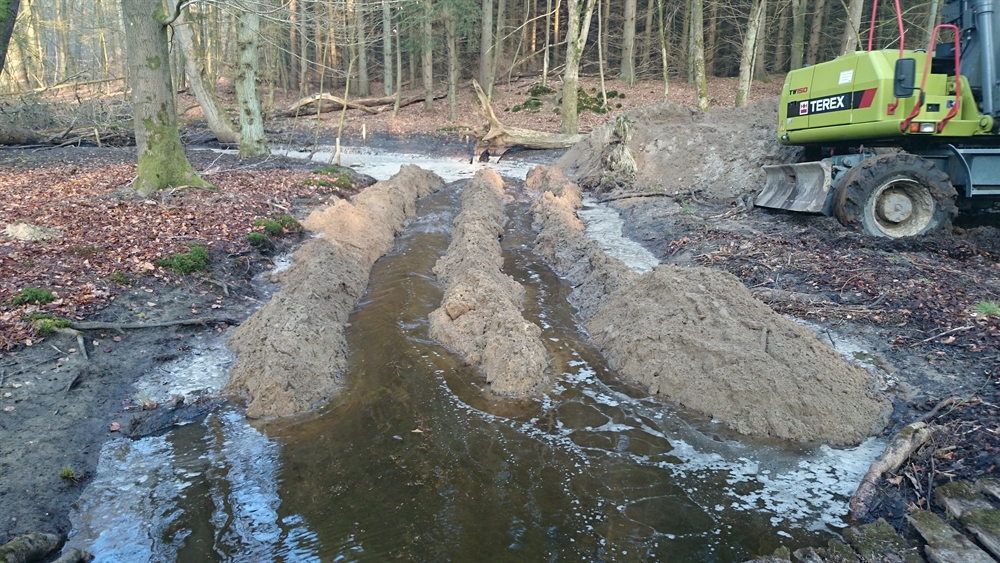Natural materials used to raise Hierdense Beek brook bed
At 25 km, the Hierdense Beek is the longest brook in the Veluwe region. This brook has gradually been sinking deeper into the terrain, which upsets the ecological connection between the brook and the brook valley. That is why the district water board has raised the brook bed, in collaboration with Natuurmonumenten nature organisation, in accordance with the “building with nature” principle. This elevation has had the secondary effect of combating drought and waterlogging.
Why has the brook sunk deeper?
As a result of climate change and changing land use, the Hierdense Beek water levels range from extremely high to extremely low. High water drives up the rate of flow and forces the brook to overflow its banks. This causes soil erosion, as a result of which the brook will sink ever deeper into the terrain.
What is building with nature?
“Building with nature” involves the use of natural processes to achieve your goals. The district water board and Natuurmonumenten have used sand to raise the brook bed. In addition, they have placed layers of dead wood in the brook.
What is the ecological effect of raising a brook bed?
The brook itself transfers the sand to deeper sections. The layers of wood help to keep its bed in place. The layers of wood and the raised brook bed have raised the water level, which has resulted in the brook overflowing its banks more frequently. This has boosted biodiversity in the zone around the brook, enabling a range of habitats to develop. Furthermore, the dead wood in the brook creates a habitat for various brook species.
How does raising a brook bed help to combat waterlogging and drought?
Once its bed has been raised, the brook will overflow its banks more frequently, as a result of which the forest will retain more water. This water will also be absorbed by the soil. The area around the brook will thus be less prone to drought, whilst the area downstream of the forest will be less prone to waterlogging.
Special features
The connection between brook and brook valley was the key to success. Factoring in the brook valley, rather than tackling only the brook, has greatly enhanced the ecological impetus to the area. The zone around the brook is much more diverse now, which has prompted the development of a range of habitats.
Lessons to be learned
The investment costs are relatively low, but the management costs may be slightly higher. The “building with nature” principle calls for adequate monitoring. Occasionally, some adjustments will be needed, for example, by removing branches and tree trunks along the banks or from the brook.
Contact person
Christian Huising
Waterschap Vallei en Veluwe
CHuising@vallei-veluwe.nl

